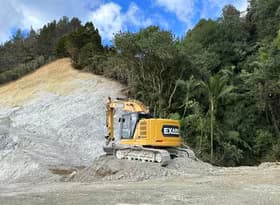
The great migration/building disconnect
At its most basic, our modelling and forecasting of residential consent numbers has two key influences: interest rates and population growth. Within the components of population growth, net migration is the biggest swing variable, while births and deaths tend to change much more slowly. However, over the last decade, the link between changes in net migration and changes in consent numbers has become much more tenuous, particularly during the COVID-19 pandemic.
Chart 1 compares the long-term history of net migration and dwelling consent numbers. In general, there is a correlation between the two series, and it was a particularly strong correlation during the 2000s. For each peak or trough in net migration between December 2000 and December 2009, there was a corresponding peak or trough in consent numbers between seven and 20 months later, with a median lag of nine months.
But prior to the 2000s, the picture is a little murkier. For the 12 peaks or troughs in net migration between 1968 and March 2000, consent numbers turned before migration did six times, and after net migration did only four times (with no corresponding turning point for consents on the other two occasions).
Understanding the times when building doesn’t follow migration
We see four possible reasons for the weaker relationship between migration and consents at different times before 2000.
- There was much greater variation in interest rates prior to the 2000s. Floating mortgage rates ranged between 6.7% and 13.0% during the 1970s, between 12.8% and 20.5% during the 1980s, and between 6.5% and 15.4% during the 1990s. Large and unexpected movements in mortgage rates are more likely to cause sizable responses in house prices and, by extension, consent numbers.
- Government policy has also played a role in affecting demand for new homes to be built. In particular, changes to rules around the capitalisation of the Family Benefit, such as the value of the section, the ability to purchase new or existing homes, and access to concessional (below-market) interest rates played a key role in construction types and volumes between the 1950s and 1970s.1 Although various forms of government assistance to assist lower-income people to purchase their first home have continued in subsequent years, this assistance has been much less generous, much less wide-ranging, and had much less of an effect on overall market outcomes.
- Other demographic factors, aside from migration, have at times had a sizable effect on demand for housing. For example, the number of people aged 20-29 increased from 301,630 to 567,210 between 1960 and 1984 (or from 12.5% to 17.2% of the population). The rapid growth in the pool of potential first-home buyers was partly responsible for a period of rapid house price growth in the first half of the 1970s, which flowed through into record high levels of construction activity.
- The timing of construction cycles can also be influenced by other economic factors. In the early 1990s, consent numbers peaked 16 months before net migration (March 1990 and July 1991 respectively) and bottomed out eight months before net migration (January 1992 and September 1992 respectively). On this occasion, the global recession was one of several negative factors that undermined New Zealand’s economic activity and, with it, construction activity. Somewhat paradoxically, the global recession also discouraged people from emigrating to Australia or further afield, despite how poorly the New Zealand economy was performing.
What’s behind the relationship breakdown this time?
As with previous decades, the last 13 years have presented their share of unusual conditions to affect building activity. The 2011 Christchurch earthquake and subsequent rebuild boosted construction activity without a corresponding increase in population growth. The plunge in fixed mortgage rates to 2.2% during 2021 drove a massive house price boom and continued increases in consent numbers, despite net migration turning negative with the borders being shut. And in between times, the residential construction industry seemed to continually struggle to build enough homes to keep pace with net migration that had surpassed previous records and stayed close to those highs. This effect was compounded by the construction industry entering the upturn from a position of sharply reduced capacity in the wake of the Global Financial Crisis.
None of these outcomes mean that the link between migration and residential construction is permanently broken. In fact, somewhat reassuringly, the link between house price growth and residential construction activity seems to have remained intact in the last few years, with house prices peaking in November 2021 and consent numbers following suit just six months later. Instead, where the relationship seems to have broken down, at least temporarily, is between net migration and house price growth.
Implications for future residential activity levels
The identification of this disconnect between net migration and house prices is consistent with our assessment that ultra-low interest rates were the primary driver of the Covid housing boom. It is also consistent with our view that housing affordability will continue to be a major constraint on house price growth over the next few years. With mortgage rates above 6%, debt-servicing costs are very high compared to incomes, limiting the number of potential buyers in the housing market, and their ability to pay significantly more for housing than current values.
For these reasons, we do not expect last year’s migration peak to translate into a significant acceleration in house prices this year or, by extension, a large pick-up in residential consent numbers. As outlined in our latest forecasts, we are predicting house price inflation of no more than 5%pa over the next year.
There is a risk that “cashed up” immigrants push up house prices because they are not constrained by high mortgage rates or debt servicing costs. A stronger near-term lift in house prices could then feed through into more of a pick-up in consent numbers than allowed for by our current forecast of a plateau in consents in the second half of 2024.
At a more fundamental level, our modelling will continue to be premised on a lag of about nine months between changes in the two core drivers of residential building activity (interest rates and population growth) and changes in consent numbers, via the transmission path of house sales and house prices. But until there is a significant realignment of house prices relative to incomes, the ties in this relationship are likely to remain weak.
1 Priced out: How New Zealand lost its housing affordability provides a good overview of the policies that prevailed during this period and their objectives.





















